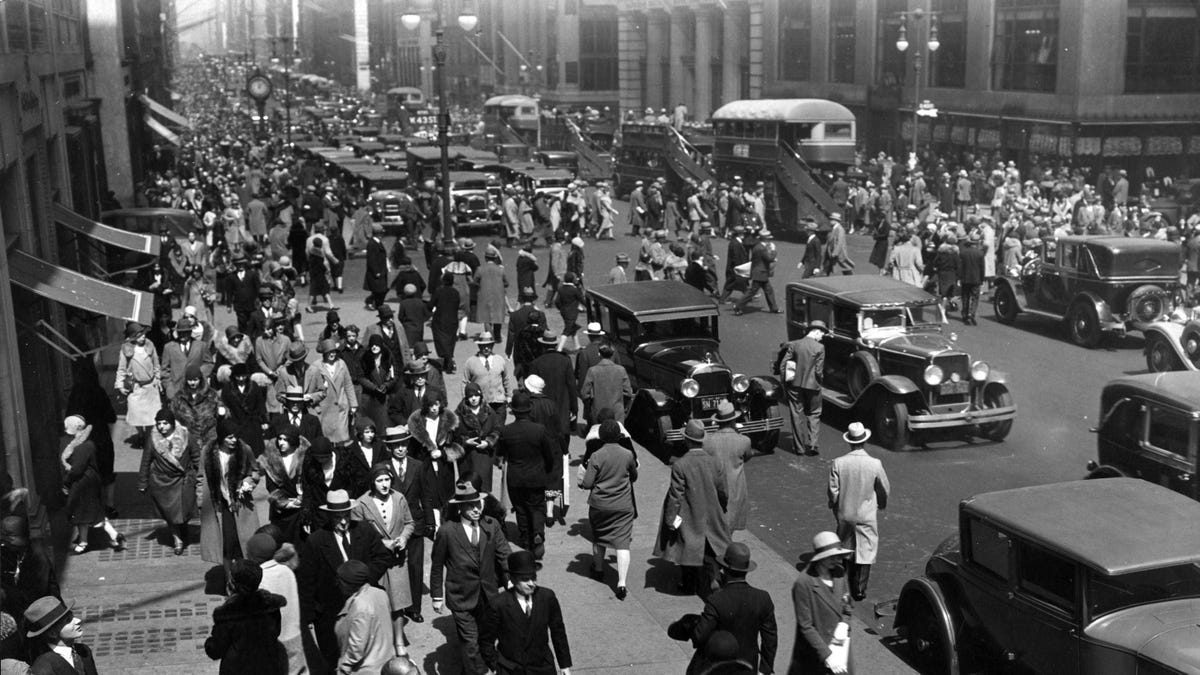The New York Times of 2024 is a rag of transphobia and genocide denial, but 100 years ago the paper wasn’t quite so cowed by the American halls of power. Back in 1924, the paper was speaking truth to power about the threat automobiles posed to American pedestrians, and the paper’s concerns are as valid as today as they were a century ago. They also go hard as hell.
Back in 1924, the gray lady ran a piece entitled Nation Roused Against Motor Killings about efforts by the Hoover administration to reign in traffic deaths, which correctly attributes traffic collisions to their enabler: automobiles. The piece also has some of the least punch-pulling writing I’ve ever seen in the paper of record. It opens:
The horrors of war appear to be less appalling than the horrors of peace. The automobile looms up as a far more destructive piece of mechanism than the machine gun. The reckless motorist deals more death than the artilleryman. The man in the street seems less safe than the man in the trench.
Fifty thousand of our men were killed in action or died of wounds in the nineteen months of this country’s participation in the World War. This is at the rate of 2,600 fatalities a month—a modest average when compared with the starling toll of 7,000 lives destroyed monthly by accidents in the United States.
Jesus Christ. The comparison being drawn here, that cars are worse for humanity than World War One, is staggering in its severity yet lines up factually with the deaths-by-months breakdown. There truly was, as the writer later pens, a “homicidal orgy of the motor car.” Dibs on that as a band name.
The year 1924 would go on to see 23,600 deaths from cars, a number we’ve upped to 40,990 in 2023. Fewer deaths per capita, sure, but that decrease can be credited to developments that prioritize motorists over all else — developments the New York Times warned about back in 1924. The paper ends its piece with a quote from traffic court magistrate W. Bruce Cobb:
It is devoutly to be wished that motor madness and motor selfishness wherever found may realize its own frailties and not ascribe all blame to the common citizen sweepingly stigmatized as a “jay-walker.”
“Motor madness” sure sounds like our modern road rage, but “motor selfishness,” a phrase seemingly not used since this piece, is something far more insidious. It’s the isolating effect of being in a car, in which the driver never interacts with the world around them except through the lens of the automobile. It’s why you don’t talk to the other driver who sit just feet away from you on your commute, why you say you’re cut off by a “white Volkswagen” rather than its occupant, and why the old-timey community that so many people claim they long to retvrn to has been replaced with modern atomization.
Cars kill. They kill people, they kill the environment, and the societal atomization created by car-centric infrastructure, driveway-equipped low-density housing, and a lack of public transit as a space shared by all has killed our empathy. The author of this New York Times piece was right to rage against the “homicidal orgy of the motor car.” More right than they know.

